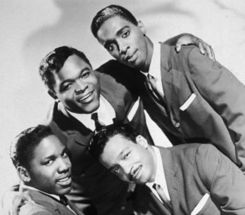doo wop
Browse By
Sort By
- Popularity
- Price:Low to High
- Price:High to Low
- Name:A-Z
- Name:Z-A
The Drifters
The Drifters are a long-lived American doo wop Pop R&B band, originally formed by Clyde McPhatter (o...
The Platters
The Platters were a successful black vocal group of the early rock n roll era. Their distinctive sou...
The Coasters
The Coasters were formed in Los Angeles, California in 1955 by Carl Gardner (tenor) and Bobby Nunn (...
The Flamingos
The Flamingos are a Rock and Roll Hall of Fame inducted doo wop group from the United States, most p...
The Harptones
The Harptones was an American doo-wop group.The group never had a top forty pop hit, or even a recor...
The Five Satins
The Five Satins are an American doo wop group, best known for their song, "In the Still of the Night...
The Marcels
The Marcels were a doo-wop group known for turning beloved American classical pop songs into rock an...
The Earls
The Earls, sometimes credited as Larry Chance and the Earls, were a popular recording group from the...
The Clovers
There are multiple groups by this name.1:The group formed in 1946 at Armstrong High School in Washin...

















